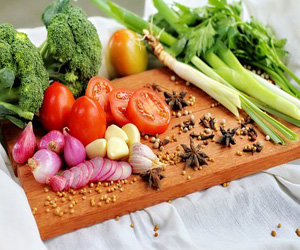


The Quest For The Ultimate Cup

In the world of coffee, the pursuit of espresso perfection is a noble and unceasing endeavor, capturing the hearts and palates of coffee connoisseurs worldwide. An espresso shot, a symphony of flavors and aromas compressed into a tiny, concentrated masterpiece, represents the zenith of coffee craftsmanship. Achieving the perfect espresso shot is a pursuit that demands unwavering dedication, precision, and an unrelenting passion for the art of brewing.
The Elements Of Espresso Perfection
Espresso perfection hinges on several essential elements that must harmonize seamlessly:
1. Coffee Beans: The selection of coffee beans is the foundational step. The origin, variety, and roast level of the beans play a pivotal role in shaping the flavor profile of the espresso. Coffee enthusiasts often meticulously source and experiment with various beans to uncover the ideal combination for their perfect shot.
2. Grinding: The grind size of the coffee beans is crucial. It must be just right, neither too fine nor too coarse, to achieve optimal extraction. Professional-grade grinders allow minute adjustments to ensure precise control over the grind size.
3. Water Quality: The quality of the water used is a often overlooked but critical factor. Clean, fresh water with the right mineral content is essential for brewing the perfect shot. It ensures that the flavors in the coffee are accentuated and not masked by impurities.
4. Brewing Temperature: Water temperature plays a fundamental role in extracting the desired flavors from the coffee grounds. Espresso demands hot water, typically between 195°F and 205°F (90°C to 96°C), to fully extract the complex aromatic compounds from the beans.
5. Pressure: Espresso machines apply high pressure, usually between 9 and 15 bars, to force hot water through the coffee grounds. This pressure not only ensures efficient extraction but also creates the luscious crema, the golden layer that tops the espresso.
6. Brewing Time: The brewing time is finely tuned, usually around 25-30 seconds. It's a delicate balance where a few seconds can make a profound difference in the taste and aroma. Under-extraction results in a weak and sour shot, while over-extraction can lead to bitterness.
The Art Of The Barista
The role of the barista in espresso perfection is akin to that of a skilled conductor leading an orchestra. The barista's experience and expertise are crucial in ensuring that every variable aligns precisely to create the perfect shot. The skills of tamping, timing, and monitoring the extraction process are finely honed through practice and dedication.
Sensory Exploration
Espresso perfection is not merely an intellectual pursuit; it's a sensory journey. The aromas that waft from the freshly ground beans, the rich scent of the crema, the complex flavors that dance on the palate, and the lingering aftertaste all contribute to the sensory exploration that accompanies each shot.
Espresso perfection is a noble and endless quest, a tribute to the mastery of the craft and an homage to the countless artisans and coffee lovers who dedicate their lives to this exquisite beverage. The pursuit of the perfect espresso shot embodies the culmination of skill, precision, and passion, and for those who have embarked on this journey, it is an ongoing voyage toward the zenith of coffee perfection. A well-brewed espresso is more than just a shot of caffeine; it's a testament to the artistry and devotion that underlie the world of coffee.




More Than Just Food For The Body
 Nourishing dishes are characterized by their ability to provide comfort and solace. They are often the recipes that offer a warm embrace during challenging times, a source of solace when we seek refuge from the chaos of the world. Whether it's a bowl of hearty chicken soup on a cold winter day, a plate of creamy macaroni and cheese, or a fragrant curry simmering on the stove, these dishes provide more than just sustenance; they offer a sense of well-being.
Nourishing dishes are characterized by their ability to provide comfort and solace. They are often the recipes that offer a warm embrace during challenging times, a source of solace when we seek refuge from the chaos of the world. Whether it's a bowl of hearty chicken soup on a cold winter day, a plate of creamy macaroni and cheese, or a fragrant curry simmering on the stove, these dishes provide more than just sustenance; they offer a sense of well-being.
At the heart of nourishing dishes is the concept of emotional nourishment. These are the meals that evoke feelings of nostalgia, family, and home. They remind us of simpler times, of the loving hands that prepared them, and of the comforting embrace of familiar flavors. Nourishing dishes go beyond filling the belly; they fill the heart and the soul.
Nourishing, Efficient, And Satisfying
 Financial Savings: Meal preparation can save money. Eating out at restaurants or ordering takeout can be expensive, and the costs add up over time. Meal preparation allows you to buy ingredients in bulk, plan cost-effective meals, and reduce food waste. It's a budget-friendly approach to dining.
Financial Savings: Meal preparation can save money. Eating out at restaurants or ordering takeout can be expensive, and the costs add up over time. Meal preparation allows you to buy ingredients in bulk, plan cost-effective meals, and reduce food waste. It's a budget-friendly approach to dining.
Reduced Food Waste: Meal preparation encourages thoughtful planning, which can help reduce food waste. You can buy ingredients with specific recipes in mind, use leftovers creatively, and ensure that perishable items are consumed before they go bad. This contributes to a more sustainable and eco-friendly way of eating.
Variety And Convenience: Meal preparation doesn't mean eating the same dish every day. With careful planning, you can enjoy a diverse menu throughout the week. You can also pack ready-to-eat meals for work, travel, or outings, ensuring that you always have a satisfying and nutritious option on hand.
Stress Reduction: Knowing that your meals are ready and waiting can reduce daily stress. You don't have to rush to prepare food after a long day at work, and you won't have to make last-minute decisions about what to eat. Meal preparation brings peace of mind, streamlining your daily routine.
Embracing Simplicity In A Complex World
 Embracing Minimalism: At its core, "back to basics" promotes minimalism. It encourages people to declutter their lives, both physically and mentally. Minimalism is about focusing on what truly matters and eliminating the excess. It's the realization that more possessions, busyness, or complexity do not necessarily lead to greater happiness or fulfillment.
Embracing Minimalism: At its core, "back to basics" promotes minimalism. It encourages people to declutter their lives, both physically and mentally. Minimalism is about focusing on what truly matters and eliminating the excess. It's the realization that more possessions, busyness, or complexity do not necessarily lead to greater happiness or fulfillment.
Simplicity In Daily Living: In a world of constant distractions and information overload, "back to basics" encourages us to simplify our daily routines. This could mean cultivating habits like mindfulness, time management, and gratitude. It's about savoring the present moment, fostering deep connections, and finding joy in life's simple pleasures.
Health And Well-Being: The "back to basics" approach extends to health and well-being. It advocates for a return to whole, unprocessed foods, regular exercise, and stress reduction techniques. Prioritizing a balanced, natural diet and physical activity can lead to improved physical and mental health, reducing the reliance on pharmaceutical interventions.




Striking The Right Balance In Modern Life
 Quality As A Cornerstone
Quality As A Cornerstone
On the other hand, quality is an essential aspect of life that affects our satisfaction and long-term well-being. Whether it's the quality of the food we eat, the products we use, or the relationships we foster, the intrinsic value often trumps the allure of convenience. Quality provides lasting enjoyment and a sense of fulfillment.
The Food Conundrum
One area where convenience vs. quality is palpable is in our food choices. Fast food and processed meals are convenient and quick, but they often lack the nutritional value and flavors of freshly prepared, high-quality ingredients. Overindulging in convenience foods can lead to health problems, while a commitment to quality, fresh, and unprocessed foods can promote well-being and a better relationship with what we eat.
Balancing Act
Striking the right balance between convenience and quality is the key to navigating the challenges of modern life successfully. It involves making conscious choices that prioritize quality without sacrificing convenience entirely. Here's how:
A Delicious Journey Back To The Source
 Support For Local Farmers: Farm-to-table dining supports local farmers and strengthens the regional economy. Local farmers are often small-scale, family-owned businesses, and by purchasing their produce, consumers help maintain the livelihood of these farmers.
Support For Local Farmers: Farm-to-table dining supports local farmers and strengthens the regional economy. Local farmers are often small-scale, family-owned businesses, and by purchasing their produce, consumers help maintain the livelihood of these farmers.
Sustainability: The farm-to-table movement champions sustainability in agriculture. Farmers who engage in this practice tend to use eco-friendly, responsible farming methods that prioritize soil health, reduce the use of harmful chemicals, and minimize carbon emissions associated with food transportation.
Community Connection: Farm-to-table restaurants often foster a strong sense of community. Diners have the opportunity to meet the people responsible for growing their food, forging meaningful connections between producers and consumers. Farmers' markets and community-supported agriculture programs further strengthen these connections.
Nourishing Your Body And Mind
 Nutrient Density
Nutrient Density
Whole foods are rich in nutrients, making them an essential part of a healthy diet. They provide an abundance of vitamins, minerals, and antioxidants that nourish the body, strengthen the immune system, and reduce the risk of chronic diseases. Because they are dense in nutrients, they help you meet your daily nutritional requirements with fewer calories, which can support weight management and overall health.
Dietary Fiber
Whole foods, particularly fruits, vegetables, and whole grains, are excellent sources of dietary fiber. Fiber is crucial for digestive health, as it promotes regular bowel movements, prevents constipation, and supports a healthy gut microbiome. Additionally, fiber helps regulate blood sugar levels, reducing the risk of diabetes, and promotes a feeling of fullness, aiding in weight control.
Natural Energy Sources
Whole foods provide a steady source of energy. They release their nutrients more slowly into the bloodstream, preventing the rapid spikes and crashes in blood sugar associated with processed foods. This steadier energy flow helps maintain alertness, focus, and sustained physical and mental endurance throughout the day.
The Art Of Ingredient Substitutions
 All-Purpose Flour: If you're out of all-purpose flour and need a substitute for baking, you can use alternatives like almond flour, coconut flour, or oat flour, depending on the recipe.
All-Purpose Flour: If you're out of all-purpose flour and need a substitute for baking, you can use alternatives like almond flour, coconut flour, or oat flour, depending on the recipe.
Sugar: For a healthier alternative, you can replace refined sugar with options like honey, maple syrup, or coconut sugar.
Butter: When a recipe calls for butter, you can use alternatives like coconut oil, olive oil, or unsweetened applesauce, depending on the application.
Heavy Cream: To replace heavy cream in savory dishes, you can use ingredients like Greek yogurt, silken tofu, or a mixture of milk and butter. For desserts, coconut cream can be a suitable alternative.
Healthier Ingredient Substitutions
Ingredient substitutions aren't just about convenience; they can also be used to make your dishes healthier. For example:
White Rice: Swap white rice for brown rice, quinoa, or cauliflower rice to increase fiber content and boost nutritional value.
Mayonnaise: In salads and sandwiches, you can replace mayonnaise with Greek yogurt for a lower-fat alternative.
Breadcrumbs: Instead of breadcrumbs, you can use crushed nuts or rolled oats for a gluten-free option in recipes.